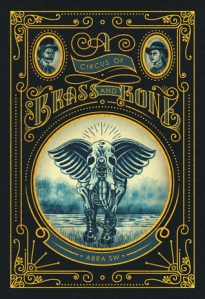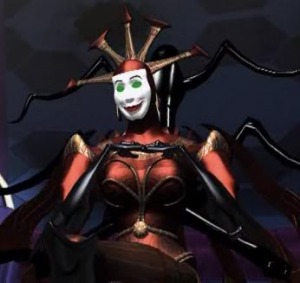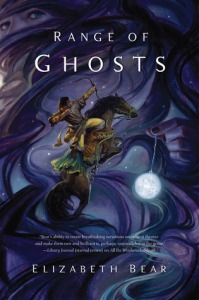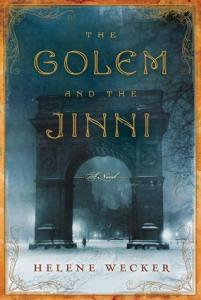I first learned about this cake on Hummingbird High. Michelle, the blogger, started the post off with “You know, some cakes just don’t photograph well…” and she’s right. Lemon and almond streamliner cake doesn’t photo well. it’s beige glop on top of a beige disk. (Though Michelle’s a fabulous food photographer and manages to make it look good anyway.) The frosting looks so goopy in the picture because it’s actually custard. Custard? Used to frost a cake? Cool! The recipe was so unusual-sounding I wanted to try it out. The result? The cake tastes way better than it looks. It’s dense, sweet, and saturated with almond flavor, which contrasts well with the lemon custard on top. So don’t judge this cake by its photos. The following recipe is for what I actually baked, because in some cases I couldn’t get the real ingredients and in other cases I was lazy. Check out Hummingbird High or Google for the real recipe. The Custard
- zest of 2 lemons
- 3/4 cup 2% milk (original recipe called for whole milk, my store doesn’t sell whole milk in anything less than a quart.)
- 1/2 cup sugar, divided into two 1/4 cup portions
- 4 egg yolks
- 1/2 teaspoon salt (original recipe called for fine sea salt. To hell with that.)
- 2 tablespoons cornstarch
- 1/2 cup lemon juice (that’s about two lemons’ worth)
- 1/2 cup butter, cut into cubes and cold
The Almond Cake
- 1 and 1/4 cups all-purpose flour (recipe called for cake flour, didn’t want to buy cake flour just for this)
- 1 and 1/2 teaspoons baking powder
- 1/2 teaspoon salt
- 7 ounces almond paste (recipe called for six ounces, the tube is seven ounces, why not?)
- 10 tablespoons butter, room temperature
- 2/3 cup sugar
- 3 tablespoons canola oil
- 1 tablespoon vanilla extract (recipe called for 2 teaspoons, I like vanilla)
- 3 eggs
- 2/3 cup buttermilk
To make the custard The custard recipe looked tricky, so I got more or less mise en place before I started: 
Combine lemon zest, 3/4 cup milk, and 1/4 cup sugar in a saucepan and put on low heat: 
While it’s heating, whisk together the 4 egg yolks, the other 1/2 cup sugar, and the 1/2 teaspoon salt. Once they’re mixed, whisk in the 2 tablespoons cornstarch and 1/2 cup lemon juice. The milk mixture should be just barely hot. Carefully mix one third of the milk mixture into the egg mixture. Keep stirring; don’t let the eggs curdle. Return the pan to the heat and pour the egg mixture into the pan, stirring continuously. Keep stirring and cooking on medium-low heat until the custard thickens and bubbles. 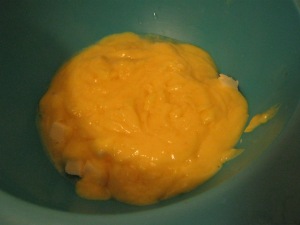
At this point, you’re supposed to strain the hot custard to get the lemon zest out of it. I forgot to and I’m glad that I did. The lemon zest adds a nice texture to the final product. Pour the hot custard over the cold butter and stir until the butter melts in. Then chill the custard. It’ll take a couple of hours before it’s ready to frost the cake. To make the cake Preheat an oven to 350ºF. Grease a nine-inch cake pan. Mix together the 1 and 1/4 cups flour, 1 and 1/2 teaspoons baking powder, and 1/2 teaspoon salt. In another bowl, mix the 7 ounces almond paste, 10 tablespoons butter, 2/3 cup sugar, 3 tablespoons canola oil and 1 tablespoon vanilla. Use an electric mixer if you have one. Mix until it it’s light and fluffy. Mix in the three eggs one at a time. Set the electric mixer aside and use a spoon. Carefully add some of the flour mixture to the almond-egg-butter mixture, then some of the buttermilk. Alternate flour and buttermilk until everything is mixed together. (I see instructions to alternate mixing in ingredients in recipes sometimes. I usually ignore those instructions and the recipe comes out fine. This time I followed the directions. If you want to add all the flour, then all the buttermilk, proceed at your own risk.) Pour the batter in the pan and bake at 350ºF for 37 minutes. (The original recipe calls for 45 minutes. It lies.) 
Even then, the cake came out darker than I expected. But it came out great when I took it out of the pan and frosted it: 
And it was delicious. 


